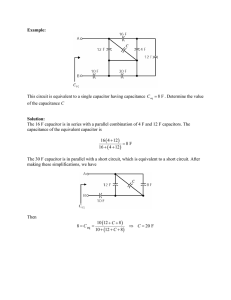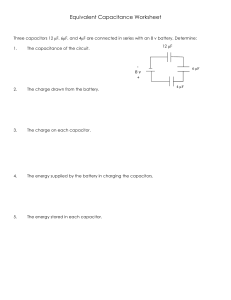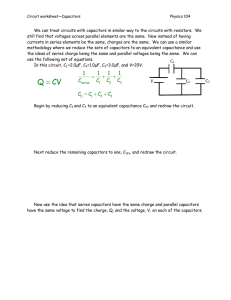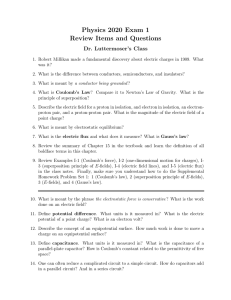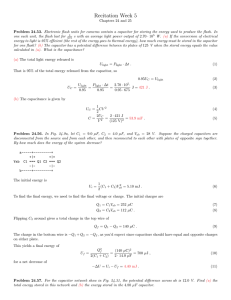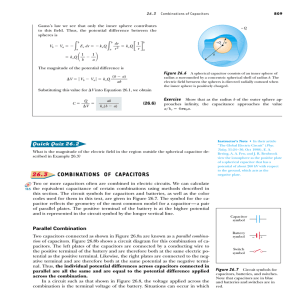Capacitors and Batteries
advertisement
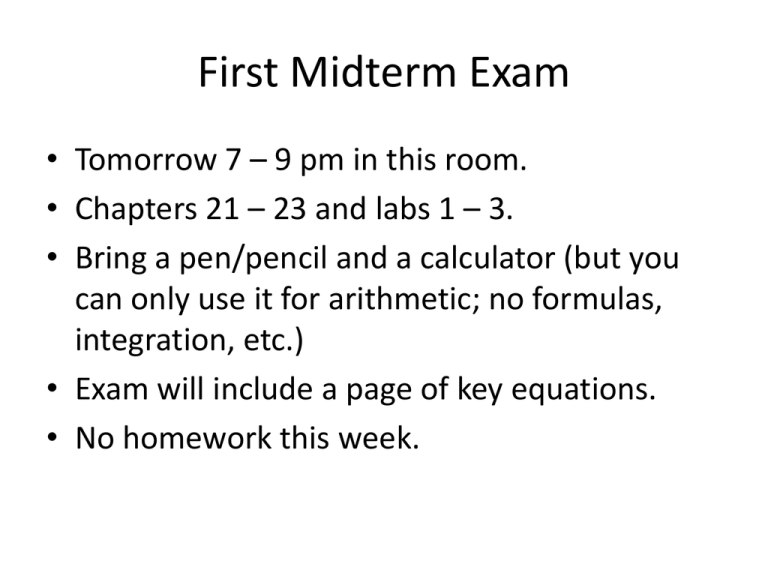
First Midterm Exam • Tomorrow 7 – 9 pm in this room. • Chapters 21 – 23 and labs 1 – 3. • Bring a pen/pencil and a calculator (but you can only use it for arithmetic; no formulas, integration, etc.) • Exam will include a page of key equations. • No homework this week. Capacitors and Batteries • A battery (or voltage source) maintains the potential difference between its two terminals by means of a chemical reaction or other mechanism. • Analyzing multiple capacitors in a circuit: – The potential is constant throughout a conductor in equilibrium. – Charge is conserved. Capacitors in Parallel Figure 24.9 Capacitors in Series Figure 24.11b (modified) Effective Capacitance • Parallel: Ceff C1 C2 • Series: 1 1 1 Ceff C1 C2 A circuit consists of a capacitor, a battery, and a switch, all connected in series. Initially, the switch is open and the capacitor is uncharged. The switch is then closed and the capacitor charges. While the capacitor is charging, how does the net charge within the battery change? 1) It increases. 2) It decreases. 3) It stays the same Several different capacitors are hooked across a DC battery in parallel. The voltage across each capacitor is 1) directly proportional to its capacitance. 2) inversely proportional to its capacitance. 3) independent of its capacitance. If C1 < C2 < C3 < C4 for the combination of capacitors shown, the equivalent capacitance is 1)less than C1. 2)more than C4. 3)between C1 and C4. Conservation • Conservation of Charge – total charge in a closed system is constant. b • Electric Field is Conservative – V Edl a – Independent of path – Depends only on the end points (a and b). – If endpoints are the same (b = a), V Edl 0 – Kirchoff’s Loop (or Voltage) Rule. Steady state • A system (e.g. circuit) is in the steady state when the current in every part of the circuit is constant. – In many practical circuits, the steady state is achieved in a short time. • In the steady state, the charge (or current) flowing into any point in the circuit has to equal the charge (or current) flowing out. – Kirchhoff’s Node (or Current) Rule.
